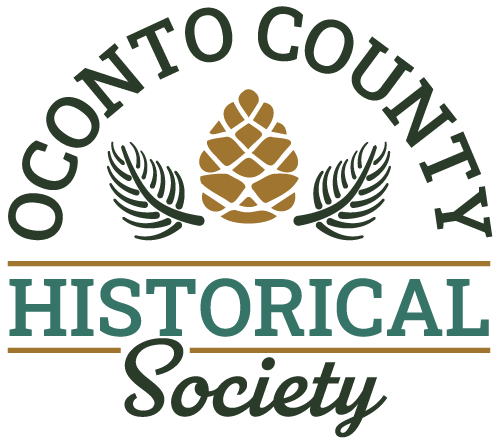Oconto County Timeline
1668
Negotiations between the Potawatomie and Menominee averted an almost certain war. French-Indian fur trader, Nicolas Perrot mediated settlement of the crisis. His partner was Tousignant Baudry.
1669
Father Claude Allouez founded the first mission in northeastern Wisconsin at the present day city of Oconto and named it St. Francis Xavier Mission. An estimated 600 Native Americans lived in the nearby village of “Oak-a-toe” now Oconto.
1787
Oconto County area becomes a territory of the newly established United States of America in the Ordinance of 1787 as part of the Northwest Territory.
1827
John Penn Arndt built the first dam and sawmill at today’s Pensaukee, beginning the first settlement in Oconto County. He was the first to have a written land deed.
Coordinates: 44°47′37″N 87°56′51″W | Source
1844
Colonel David Jones, with sons Tarleton and Huff, from Wellsburg VA, built the first successful dam and mill at the site of today’s city of Oconto at “Susie’s Hill” near the large Menominee Village. Earlier attempts had washed out, including the first in 1842 by George Lurwick. The Jones family manufactured the first wood for general sale. The Jones family eventually settled nearby in 1847, after living several years in the comfort of Fort Howard near Green Bay.
1846
Thomas Lindsey and family came to the mouth of the Oconto River from Milwaukee by boat as the first permanent settlers in the city of Oconto. They built an “over-night place” for travelers. Thomas Lindsay family, first permanent settlers of City of Oconto. Lived at first in a tent. They were followed shortly after by the Harts & Richard Berry.
Coordinates: 44°53′15″N 87°52′13″W
1846
John and Almira Volk come up the Oconto River as far as the falls by boat as their possessions could not be taken along the Indian trails, the only land routes of the time. They traveled from Chicago to settle and build a saw mill at Oconto Falls.
Coordinates: 44°52′29″N, 88°8′34″W | Source
1848
Wisconsin gains statehood status
1850
Thomas Howard Couillard, Sr. and all his children and their families, along with Lavina Couillard, married to Benjamin Woodman with her family migrated to Milwaukee. Thomas Howard Jr. continued on to the Oconto Falls area & returned to Milwaukee in late 1849, early 1850. Jacob Couillard, son of Thomas Howard Sr., moved by ox drawn covered wagon to Oconto County to an area on the Oconto River later called Couillardville.
View Map
1851
Oconto County is formed from the northern part of Brown County. It extends the entire western length of the Green Bay and Lake Michigan to Michigan’s Upper Peninsula border. Oconto Mills is chosen as the county seat. It was the largest county in the state and had 5,000 square miles of unbroken wilderness.
1852
Brookside The first settler into the area which became a rural cross roads community was William W. Delano, a bachelor, who was in the area by June 1852, when he was elected the first surveyor for the newly established Oconto County. With minimum necessities to maintain him, this single individual established his homestead in an area of virgin forest.
Coordinates: 44°48′17″N 87°59′52″W
1852
George Beyer had traveled from Germany with his parents to the US some years earlier. In this year, the industrious young man came to Oconto County.
1853
Shawano County created from Oconto, Waupaca, and Winnebago Counties
Atlas of Historical County Borders
1854
Richard B. Yeaton built a sawmill on the Pensaukee River in 1854 and called the settlement West Pensaukee. It was renamed Abrams for W. J. Abrams, a railroad investor, state representative in 1860s, and Green Bay mayor in 1880s. He owned land where the Chicago, Milwaukee, St. Paul and Western rail line built a depot in 1881.
Coordinates: 44°48′27″N 88°4′20″W | Source
1854
Organization of new Town of Howard
State Source
1856
Organization of new Town of Pensaukee; Alteration of the Town of Howard & the name changed to Stiles
State Source
1857
Rodney Gillett, born in Albany, New York in 1833, buys the Henry Tourtilotte homestead in what is now the village of Gillett. He marries Mary Roblee in Clayton the next year and she becomes the first white woman to live in the area.
Coordinates: 44°53′23″N, 88°18′23″W | Source
1859
Organization of the Town of Suamico, the Town of Peshtigo and the Town of Marinette
State Source
1859
Village of Oconto incorporated
State Source
1866
Land annexed to the Town of Marinette from the Town of Oconto
State Source
1867
Chase was originally established on April 15, 1873 as St. Nathans. The name was changed to Chase on March 20, 1890. Chase was named for Chase & Dixie Sawmill in operation along the Little Suamico River by 1867.
Coordinates: 44°42′25″N 88°11′17″W | Source
1869
Oconto Mills is officially chartered as City of Oconto.
View Map
City of Oconto incorporated.
State Source
1870
Originally known as the Maple Valley settlement, Lena owes its location to the railroads. The first white settlers in this vicinity arrived in the late 1870s and consisted primarily of French Canadian immigrants. As was common in other areas populated by French-Canadians during this era, most of the Maple Valley residents engaged in small-scale logging, concentrating their work and their homes along Jones Creek, a tributary of the Little River. By 1879 the community had become large enough to support a post office and, since the name “Maple Valley” had already been assigned to another Wisconsin post office, the recommendation of a new name fell to Oconto Postmaster George R. Hall. Hall submitted the first name of his future wife to the federal postmaster, and the choice was approved.
Coordinates: 44°59′7″N 88°3′22″W
1870s
Kelly Brook/Kelly Lake
An Indian Trail was the only route from what is now the city of Oconto, through the center of today’s Lena and into Kelly Brook, which was named after an interesting early resident, Pat Kelly. Nearby Kelly Lake, also named after Pat Kelly, was originally called Christy Lake.
View Map
In 1875 when the C. Bartletts, who were survivors of the Peshtigo Fire, moved from Hart’s Switch to Kelly Brook there were few settlers, but among them were the James Marlett, the Stanislaus (Dennis) Martineau, the Jeff Tessier, the Abe Tourtillot, the William Morrison, the J. A. Schweiberg, and the Wolf Babka families.
Taken from Recollections of Oconto County, printed by the Oconto County Historical Society, 1954.
1872
Town of How is separated from Town of Washington, Shawano County
Coordinates: 44°59′58″N 88°25′38″W
1873
Organization of the Town of Maple Valley
State Source
1876
Organization of the Town of Langlade
State Source
1876
Order defining the boundaries of the several towns of Oconto County: Little Suamico, Pensaukee, Langlade, Gillett, Stiles, Oconto, Maple Valley, Peshtigo, Marinette
State Source
1877
Order changing the boundaries of certain towns in Oconto County. Little Suamico added to Langlade, Oconto added to Marinette, Stiles added to Peshtigo, Oconto added to Stiles, and Stiles added to Gillett.
State Source
1877
The Pensaukee Tornado reduced the once large and prosperous town to total ruin, from which it never fully recovered.
Coordinates: 44°47′37″N 87°56′51″W
1877
One of several stopping off places used to feed teams and hungry loggers in early Oconto County history was Mountain. Fifty miles north of Jab Switch (now the city of Oconto), and on the banks of the north branch of the Oconto River, Thomas Mc Allen, his wife and six children built the first permanent home in 1877.
Coordinates: 45°9′17″N 88°26′20″W
1879
Marinette County and a new county (now Langlade County) established from Oconto County
map | Atlas of Historical County Borders
1879
Town of How was moved from Shawano County to Oconto County.
Atlas of Historical County Borders
1880s
Morgan The Town of Morgan was originally a part of the town of Pensaukee. It is located along both sides of the north and south branches of the Pensaukee River and inland of The Bay, 15 miles. This was a rich, dense forested area. In the years following the 1877 Pensaukee Tornado, families began migrating to the rich and fertile land on the upper branches of the Pensaukee River.
Coordinates: 44°48′26″N 88°10′40″W
1880s
Breed was named for the first postmaster of the village, George M. Breed. The first settler was James Knight who took a homestead. People came on foot along Indian and animal trails as there was not a road through Oconto County until 1860.
Coordinates: 45°4′34″N 88°24′53″W
1882
Florence County created from Marinette County including part of Oconto that was transferred to Marinette on the same day.
Atlas of Historical County Borders
1882
Joe Suring, with his wife and six children built a home along the Oconto River and purchased the land that is now the city of Suring for $215.
Coordinates: 45°0′0″N 88°22′28″W
1886
Oconto County lost area to Forest County
Atlas of Historical County Borders
Acknowledgement is given to the Oconto County WIGenWeb Project, for the initial idea of this page as well as much of the information.

